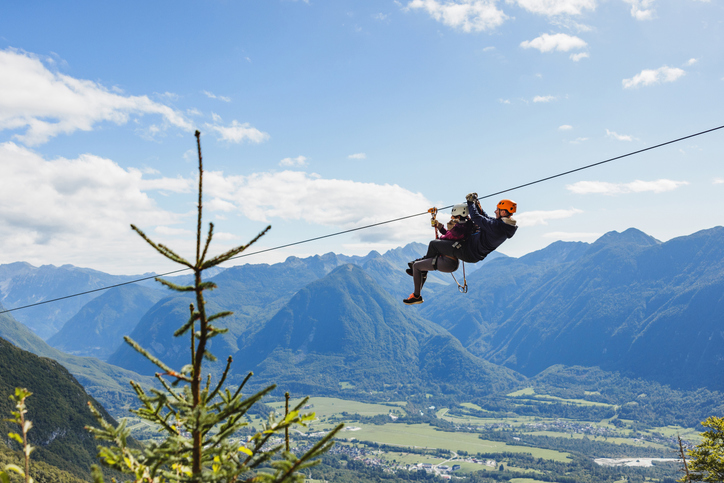
A zip line attraction brings excitement for your customers – and likely for you as well. However, it also carries significant risks. From ensuring customer safety to protecting your property and equipment, having the right insurance coverage is essential. With this guide, we’ll walk you through the key considerations for insuring your zip line or aerial attraction business and provide actionable insights into mitigating risks.
Why the Right Insurance is Critical for Zip Line Attractions
Zip line attractions combine adventure and thrill, but they also pose unique liability and operational challenges. Whether you’re running an outdoor aerial park or a single zip line, unexpected events such as accidents, property damage, and equipment malfunctions could lead to significant financial loss if you’re not adequately insured.
The right insurance coverage not only protects your business but also offers peace of mind, giving you the confidence to focus on providing exceptional customer experiences.
Key Risks Associated with Zip Line Attractions
Before selecting an insurance policy, it’s important to understand the primary risks associated with zip line operations:
- Liability Risks: Injuries to participants or staff could lead to extensive legal and financial consequences.
- Property Risks: Damage to your property, such as platforms, cables, and harnesses, caused by weather events or vandalism.
- Equipment Risks: High-use equipment like pulleys, harnesses, and braking systems can fail, impacting customer safety and your bottom line.
- Accident and Medical Risks: Injuries, whether minor or severe, require prompt medical attention, and insurance coverage can help with these costs.
Types of Insurance Coverage for a Safer Operation
To ensure your business is well-protected, consider these essential types of insurance for zip line attractions:
- General Liability Insurance
General liability insurance is a must-have for any adventure business. It covers claims arising from injuries or property damage caused by the operation of your zip line attractions. This includes:
• Medical expenses for injured customers.
• Legal fees if a claim leads to a lawsuit.
• Accidental damage to a customer’s belongings.Given the inherent risks of zip lining, liability insurance ensures you’re covered in case of unforeseen incidents while providing a secure experience for your customers. - Property Insurance
Your zip line infrastructure represents a significant investment, and property insurance protects it against natural disasters, theft, or vandalism. For instance, if a storm damages your platforms or zip line cables, property insurance helps cover repair or replacement costs. - Workers’ Compensation
Zip line attractions often rely on trained staff to maintain safety protocols and guide participants through their activities. Workers’ compensation insurance protects your employees by covering medical expenses and lost wages if they are injured on the job. - Accident and Medical Insurance
Sometimes, despite your best efforts to maintain safety, accidents occur. Accident and medical insurance is designed to cover participant injuries on-site, ensuring they receive medical attention without significant costs falling on your business. - Equipment Insurance
Equipment failures can lead to disruptions in your operation, high repair costs, and even accidents. Equipment insurance protects your investment in harnesses, pulleys, zip line cables, and other gear, ensuring they can be repaired or replaced promptly. - Umbrella and Excess Liability Insurance
For additional peace of mind, umbrella policies offer extra liability coverage beyond the limits of your general liability or existing policies. They are particularly useful for high-risk industries like zip line attractions where standard limits may not suffice.
For additional peace of mind, umbrella policies offer extra liability coverage beyond the limits of your general liability or existing policies. They are particularly useful for high-risk industries like zip line attractions where standard limits may not suffice.
Steps to Finding the Right Insurance
Finding the ideal insurance coverage requires a strategic approach. Follow these steps to secure the best protection for your business:
Step 1: Assess Your Risks
Begin by evaluating the specific risks involved in your zip line operations. Are you located in an area prone to severe weather? Do you offer intensive, high-risk courses? Understanding your unique challenges will help guide your insurance needs.
Step 2: Explore Specialized Providers
Not all insurers understand the complexities of zip line operations, which is why partnering with a specialized provider (like Granite Insurance, for example) can make a significant difference. These providers understand the nuances of the industry and can design policies tailored to your needs.
Step 3: Compare Policies and Coverage
When comparing policies, carefully review coverage limits, inclusions, and exclusions. Look for potential gaps (or “landmines”) in coverage that could leave your business vulnerable.
Step 4: Understand Legal and Industry Standards
Referencing industry standards, such as those from the Association for Challenge Course Technology (ACCT), ensures your insurance complies with industry best practices and legal requirements.
Step 5: Keep Coverage Updated
Your business will evolve over time, whether by expanding courses or adding features. Regularly update your insurance coverage to ensure it aligns with your operation’s current scope.
Secure Your Zip Line Business Today
Protecting your zip line attraction with the right insurance coverages means more than financial security; it demonstrates your commitment to the safety and enjoyment of your customers.
If you’re ready to explore tailored insurance solutions for zip line attractions and aerial adventure parks, now is the time to act. Contact Brandon Patterson on our team at brandon@ownbyinsurance.com to get started on your coverage needs today!